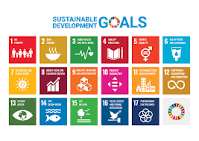STREET ART AS A MIRROR OF SOCIAL ISSUES
Wandering through the bustling lanes of Kathmandu or the quieter corners of
Pokhara, one might pause to notice a vibrant mural splashed across a wall or a
stencil art piece boldly confronting passersby. Street art—once dismissed as
mere vandalism or graffiti—has increasingly emerged as a powerful form of
expression, reflecting the complexities, hopes, and tensions of society. It is
a public canvas where voices often unheard find color and shape, transforming
urban landscapes into open-air galleries of social commentary.
Unlike traditional art housed in galleries or museums, street art belongs
to the people. It is accessible, immediate, and unapologetically direct. Murals
depicting themes such as poverty, political unrest, environmental degradation,
or gender inequality do not ask for quiet contemplation but demand engagement.
They challenge viewers to confront realities that might otherwise be ignored or
sanitized in mainstream discourse.
In Nepal, street art has become a vehicle for youth and marginalized
communities to articulate their experiences and frustrations. The walls speak
of land displacement, corruption, climate change, and the struggle for social
justice. For example, images of disappearing forests painted near highways
subtly remind commuters of environmental loss, while portraits of everyday
heroes—teachers, activists, farmers—honor those working quietly for change.
Such art weaves individual stories into the broader social fabric, making
abstract issues tangible and urgent.
Street art also functions as a form of resistance. It reclaims public space
from commercial advertisements and political propaganda, asserting that the
city belongs to all its inhabitants, not just those with power or capital. The
act of painting on walls without official permission itself becomes a statement
about freedom, ownership, and the right to be heard. In this sense, street art
is both a mirror and a hammer—it reflects society and also attempts to shape
it.
However, the reception of street art is not without controversy. Some see
it as defacement, a disruption to order and aesthetics, or a threat to property
values. These conflicts raise important questions about who gets to define
public space and whose voices are validated. When street art is sanctioned or
co-opted by authorities, does it lose its edge? Can it still challenge the
status quo, or does it become another form of controlled spectacle?
Despite these tensions, street art’s impact is undeniable. It fosters
dialogue among diverse audiences, bridges gaps between generations, and sparks
critical conversations. In neighborhoods where walls are once gray and silent,
vibrant murals invite curiosity, pride, and a sense of identity. They remind us
that art is not confined to elite spaces but thrives wherever people live,
struggle, and dream.
Moreover, street art often collaborates with other social movements,
amplifying messages of hope and solidarity. Campaigns for women’s rights,
environmental conservation, and mental health awareness find a visual voice on
city walls, making these issues more visible and relatable. Through this,
street art helps democratize information and empower communities.
In reflecting on street art as a mirror of social issues, we recognize its
role as both an artistic and political act. It holds up a colorful lens to
society’s fractures and aspirations, inviting us all to see, listen, and
respond. As the walls speak, so too must we engage—not just as spectators, but
as participants in the ongoing conversation about who we are and who we want to
become.

Comments
Post a Comment